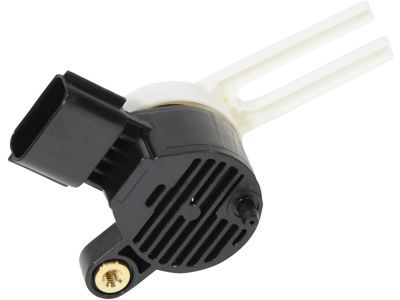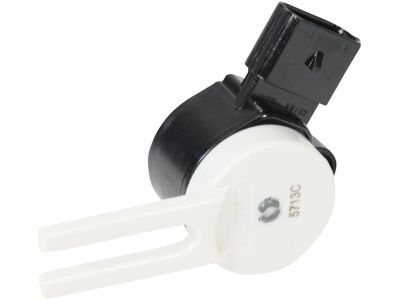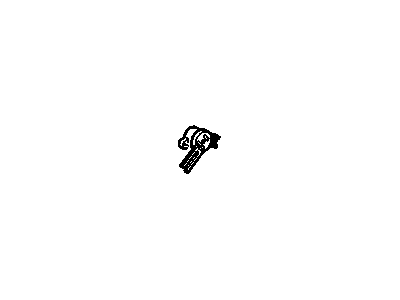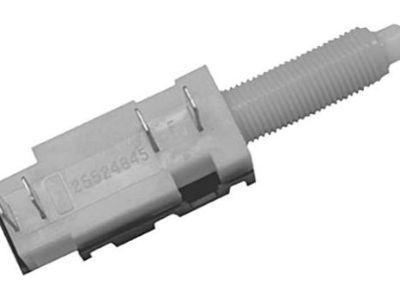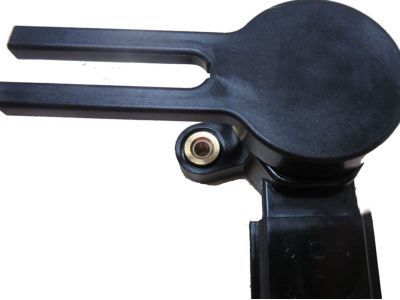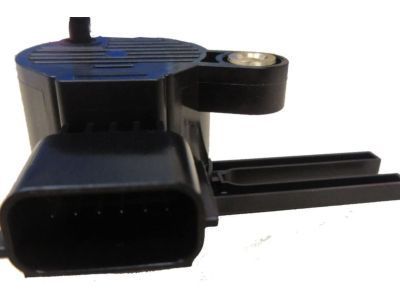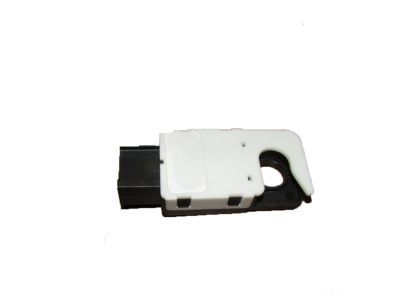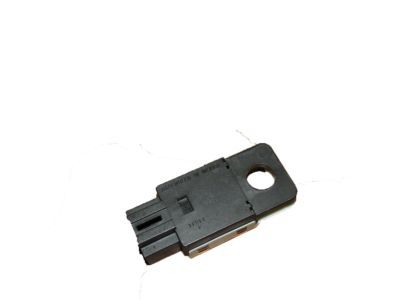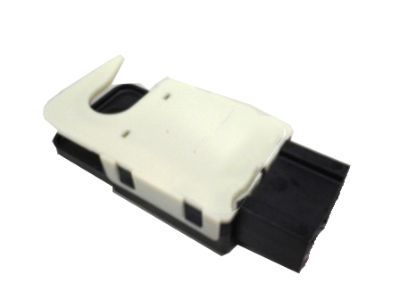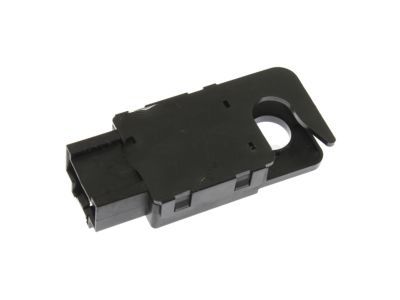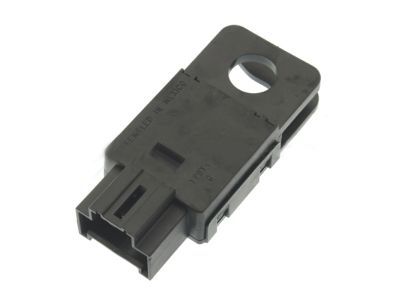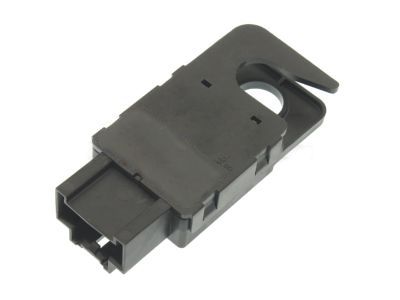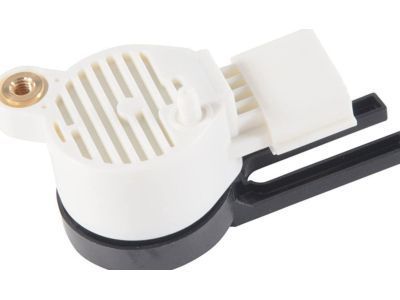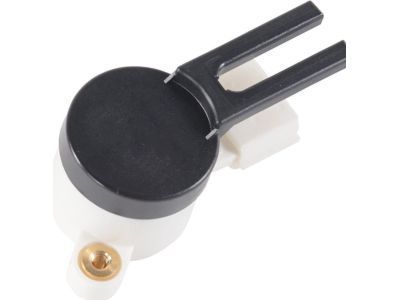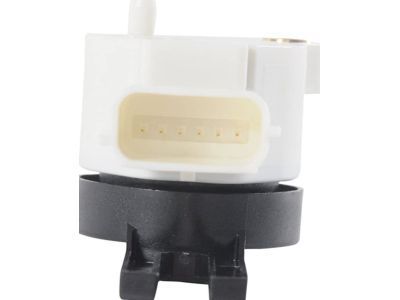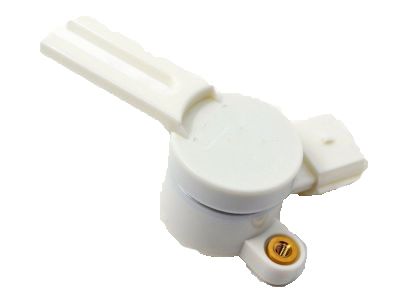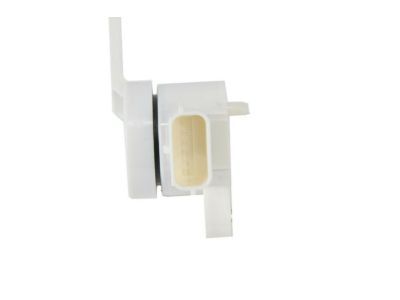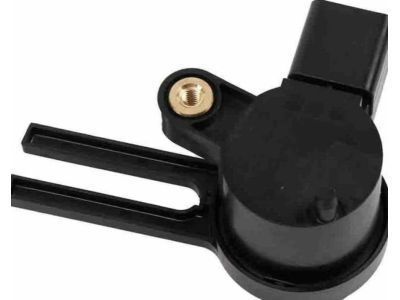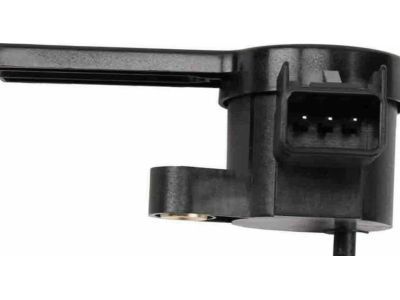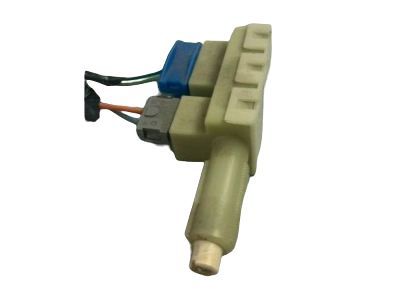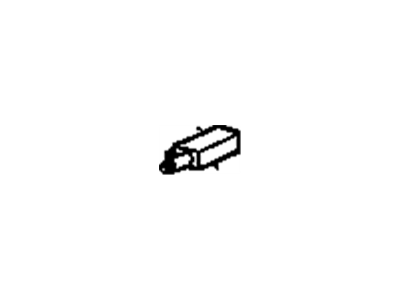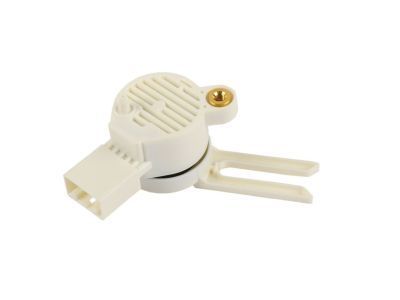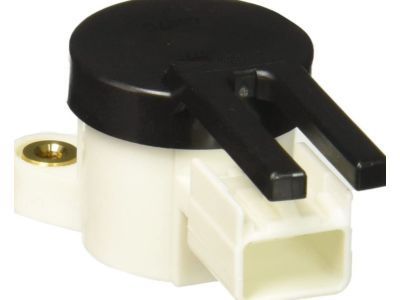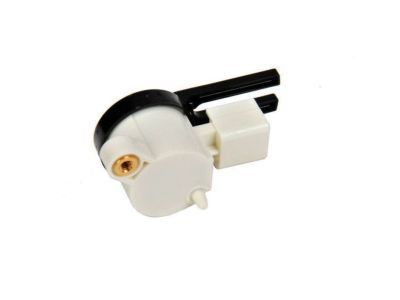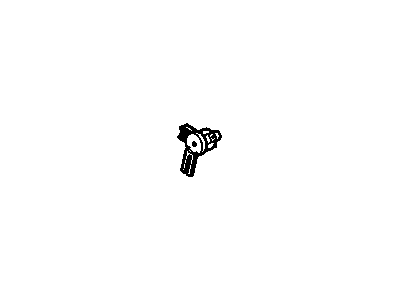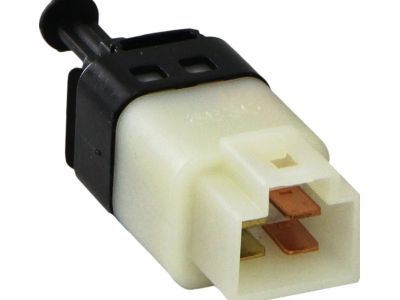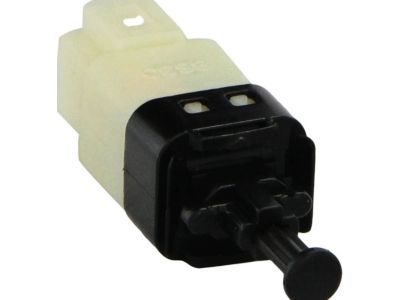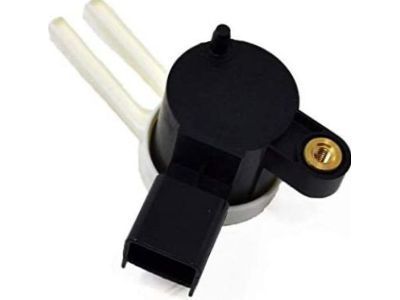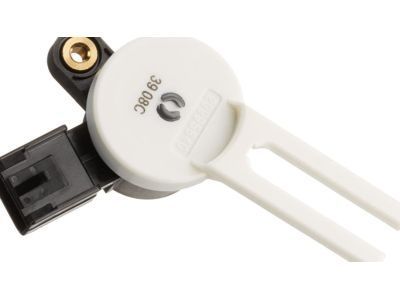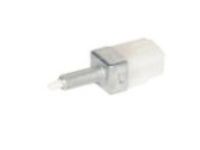
My Garage
My Account
Cart
Genuine Chevrolet Brake Light Switch
Brake Lamp Switch- Select Vehicle by Model
- Select Vehicle by VIN
Select Vehicle by Model
orMake
Model
Year
Select Vehicle by VIN
For the most accurate results, select vehicle by your VIN (Vehicle Identification Number).
84 Brake Light Switches found
Chevrolet Sensor Assembly, Brake Pedal Position
Part Number: 13597422$39.90 MSRP: $77.78You Save: $37.88 (49%)Ships in 1-3 Business DaysProduct Specifications- Other Name: SENSOR, Brake; Position Sensor, Sensor, Stoplamp Switch
- Replaced by: 13564167
- Replaces: 13583369
Chevrolet Switch Assembly, Stop Lamp & Cruise
Part Number: 25524845$16.96 MSRP: $31.78You Save: $14.82 (47%)Product Specifications- Other Name: SWITCH, Stop Lamp Switch; Brake Switch, Stoplamp Switch
Chevrolet Sensor Assembly, Brake Pedal Position
Part Number: 13597425$13.30 MSRP: $25.93You Save: $12.63 (49%)Ships in 1-2 Business DaysProduct Specifications- Other Name: SENSOR, Brake; Pedal Travel Sensor, Stoplamp Switch
- Replaced by: 13564170
- Replaces: 13583372
Chevrolet Switch Assembly, Stop Lamp
Part Number: 25981009$65.69 MSRP: $134.40You Save: $68.71 (52%)Ships in 1-2 Business DaysProduct Specifications- Other Name: SWITCH, Stop Lamp Switch; Stoplamp Switch
Chevrolet Switch Assembly, Stop Lamp
Part Number: 15861245$54.44 MSRP: $111.40You Save: $56.96 (52%)Ships in 1-2 Business DaysProduct Specifications- Other Name: SWITCH, Stop Lamp Switch; Stoplamp Switch
Chevrolet Sensor Assembly, Brake Pedal Position
Part Number: 13597423$35.64 MSRP: $67.24You Save: $31.60 (47%)Ships in 1-2 Business DaysProduct Specifications- Other Name: SENSOR, Brake; Pedal Travel Sensor, Sensor, Stoplamp Switch
- Replaced by: 13564168
- Replaces: 13583370
Chevrolet Sensor Assembly, Brake Pedal Position
Part Number: 13597424$30.46 MSRP: $57.50You Save: $27.04 (48%)Ships in 1-2 Business DaysProduct Specifications- Other Name: SENSOR, Brake; Pedal Travel Sensor, Sensor, Stoplamp Switch
- Replaced by: 13564169
- Replaces: 13583371
Chevrolet Switch Assembly, Stop Lamp
Part Number: 20913529$31.86 MSRP: $60.12You Save: $28.26 (48%)Ships in 1-2 Business DaysProduct Specifications- Other Name: SWITCH, Stop Lamp Switch; Stoplamp Switch
- Replaces: 15186470, 15912229, 25796381
Chevrolet Sensor Assembly, Brake Pedal Position
Part Number: 13597415$7.49 MSRP: $14.14You Save: $6.65 (48%)Ships in 1-2 Business DaysProduct Specifications- Other Name: SENSOR, Brake; Brake Switch, Position Sensor, Stoplamp Switch
- Replaced by: 13564164
- Replaces: 22865566
Chevrolet Sensor,Brake Pedal Position
Part Number: 25912943$13.36 MSRP: $25.16You Save: $11.80 (47%)Ships in 1-3 Business DaysProduct Specifications- Other Name: SENSOR, Brake; Clutch Switch, Stoplamp Switch
Chevrolet Switch,Stop Lamp & Automatic Transmission Shift Lock & Cruise Control Release
Part Number: 12450036$15.29 MSRP: $24.02You Save: $8.73 (37%)Ships in 1-2 Business DaysProduct Specifications- Other Name: SWITCH, Stop Lamp Switch
Chevrolet Sensor Assembly, Brake Pedal Position
Part Number: 22791177$17.49 MSRP: $32.98You Save: $15.49 (47%)Ships in 1-3 Business DaysProduct Specifications- Other Name: SENSOR, Brake; Stoplamp Switch
Chevrolet Sensor Assembly, Brake Pedal Position
Part Number: 13597429$12.07 MSRP: $19.25You Save: $7.18 (38%)Ships in 1-2 Business DaysProduct Specifications- Other Name: SENSOR, Brake; Clutch Switch, Sensor, Stoplamp Switch
- Replaces: 89047699
Chevrolet Switch,Stop Lamp
Part Number: 95368630$10.23 MSRP: $19.30You Save: $9.07 (47%)Ships in 1-2 Business DaysProduct Specifications- Other Name: SWITCH, Stop Lamp Switch; Stoplamp Switch
- Replaces: 96436331, 96440927, 96874572, 96552789
Chevrolet Sensor Assembly, Brake Pedal Position
Part Number: 20995840$15.69 MSRP: $29.60You Save: $13.91 (47%)Ships in 1-3 Business DaysProduct Specifications- Other Name: SENSOR, Brake; Clutch Switch, Position Sensor, Stoplamp Switch
- Replaces: 13348501, 92190131, 15223506, 25889337, 92220355
Chevrolet Sensor Assembly, Brake Pedal Position
Part Number: 13597426$9.41 MSRP: $18.50You Save: $9.09 (50%)Ships in 1-2 Business DaysProduct Specifications- Other Name: Sensor Assembly, Brk Ped Posn; Stoplamp Switch
- Replaces: 13583373
Chevrolet Sensor Assembly, Brake Pedal Position
Part Number: 13597430$20.26 MSRP: $38.26You Save: $18.00 (48%)Ships in 1-2 Business DaysProduct Specifications- Other Name: SENSOR, Brake; Stoplamp Switch
- Replaced by: 13549053
Chevrolet Sensor Assembly, Brake Pedal Position
Part Number: 13597420$14.08 MSRP: $26.56You Save: $12.48 (47%)Ships in 1-2 Business DaysProduct Specifications- Other Name: SENSOR, Brake; Stoplamp Switch
- Replaces: 13583367
- Product Specifications
- Other Name: SWITCH, Stop Lamp Switch; Stoplamp Switch
- Replaces: 94853071
- Product Specifications
- Other Name: SWITCH, Stop Lamp Switch; Stoplamp Switch
| Page 1 of 5 |Next >
1-20 of 84 Results
Chevrolet Brake Light Switch
At GMPartsGiant.com, we offer an extensive inventory of genuine Chevrolet Brake Light Switches at competitive prices in the market. All our OEM Chevrolet Brake Light Switches are backed by the manufacturer's warranty and will be shipped promptly to your doorstep. Rest assured, our hassle-free return policy is designed to support you throughout your shopping experience!
Chevrolet Brake Light Switch Parts Questions & Experts Answers
- Q: What is the function of the Anti-lock Brake System, and how can Brake Light Switch and potential issues be inspected and diagnosed on Chevrolet Tracker?A:The ABS is an especially named brake system that keeps the vehicle respond-ability, directional stability and, above all, the optimum negative acceleration under severe brake conditions on most types of roads, pavement, by detecting the rate of the wheels' rotation and modulating the brake line pressure during brak-ing in order to avoid premature locking of the wheels. Two types of systems are utilized: RAWL which controls lockup on the rear wheels and Four Wheel Anti-lock (ABS) which prevents lockup of all four wheels. The actuator assembly includes the master cylinder and control valve(s), which include the dump valve and the isolation valve and functions by means of brake fluid pressure variation in accordance with signal instructions from the control module for RAWL or EBCM for ABS. RAWL has a control module placed behind the area over the driver's side of the instrument panel and the ABS has an electronic brake control module mounted on the passenger side of the brake pedal brace The processor communicates with speed sensors, brake light switch and controls hydraulic line pressure to monitor for faults in the system. The BRAKE message light on the dashboard goes on and there is always a diagnostic code that helps the service technicians tell where the problem is. Rawl speed sensors are located in different places from those of abs, the former has one speed sensor located at the rear differential carrier while the abs has one at each of the front wheels and one at the rear differential carrier. This switch tells the control module if the brake pedal is engaged this is important to the operation of the anti-lock system. If for instance the BRAKE warning light is still on then one should ensure that the parking brake is not on and that there is no problem with the brake hydraulics; if all these are not the problem then the system could be defected. Some of the preliminary checks that can be done by the home mechanic comprise of; checking of the brakes calipers and wheel cylinders, inspection of electrical connectors at the control module assembly, checking of fuses, ensuring that the connections to the speed sensors and brake light switch are correct and tight and damages wiring. In case of failure of these checks, professional diagnosis is advised.
Related Chevrolet Parts
Browse by Model
Astro Brake Light Switch Avalanche Brake Light Switch Aveo Brake Light Switch Beretta Brake Light Switch Blazer Brake Light Switch Blazer EV Brake Light Switch Bolt EUV Brake Light Switch Bolt EV Brake Light Switch C10 Brake Light Switch C1500 Brake Light Switch C20 Brake Light Switch C2500 Brake Light Switch C30 Brake Light Switch C3500 Brake Light Switch Cadet Brake Light Switch Camaro Brake Light Switch Caprice Brake Light Switch Captiva Sport Brake Light Switch Cavalier Brake Light Switch Celebrity Brake Light Switch Chevette Brake Light Switch Citation Brake Light Switch City Express Brake Light Switch Cobalt Brake Light Switch Colorado Brake Light Switch Corsica Brake Light Switch Corvette Brake Light Switch Cruze Brake Light Switch El Camino Brake Light Switch Epica Brake Light Switch Equinox Brake Light Switch Equinox EV Brake Light Switch Express Brake Light Switch G10 Brake Light Switch G20 Brake Light Switch G30 Brake Light Switch HHR Brake Light Switch Impala Brake Light Switch K10 Brake Light Switch K1500 Brake Light Switch K20 Brake Light Switch K2500 Brake Light Switch K30 Brake Light Switch K3500 Brake Light Switch Lumina Brake Light Switch Malibu Brake Light Switch Metro Brake Light Switch Monte Carlo Brake Light Switch Nova Brake Light Switch Orlando Brake Light Switch P30 Brake Light Switch Prizm Brake Light Switch R10 Brake Light Switch R20 Brake Light Switch R2500 Brake Light Switch R30 Brake Light Switch R3500 Brake Light Switch S10 Brake Light Switch SS Brake Light Switch SSR Brake Light Switch Silverado Brake Light Switch Silverado EV Brake Light Switch Sonic Brake Light Switch Spark Brake Light Switch Spark EV Brake Light Switch Spectrum Brake Light Switch Sprint Brake Light Switch Storm Brake Light Switch Suburban Brake Light Switch Tahoe Brake Light Switch Tracker Brake Light Switch Trailblazer Brake Light Switch Traverse Brake Light Switch Trax Brake Light Switch Uplander Brake Light Switch V10 Brake Light Switch V20 Brake Light Switch V30 Brake Light Switch V3500 Brake Light Switch Venture Brake Light Switch Volt Brake Light Switch
